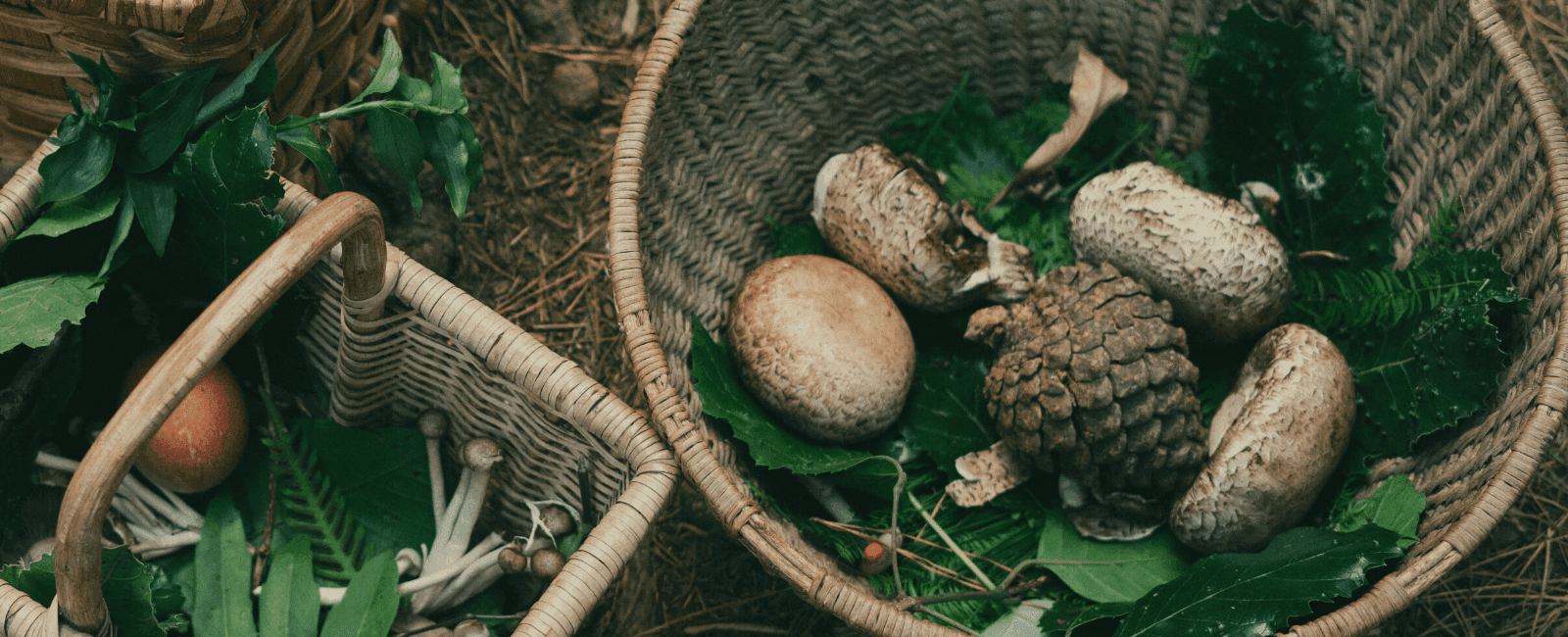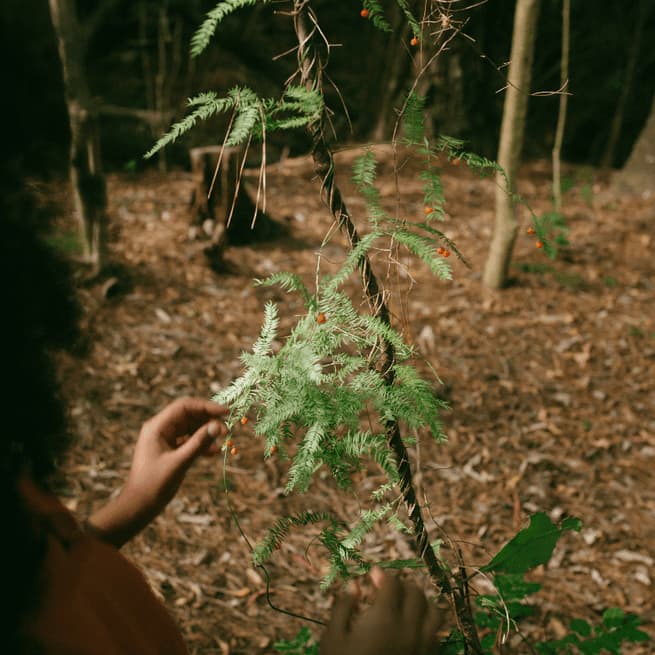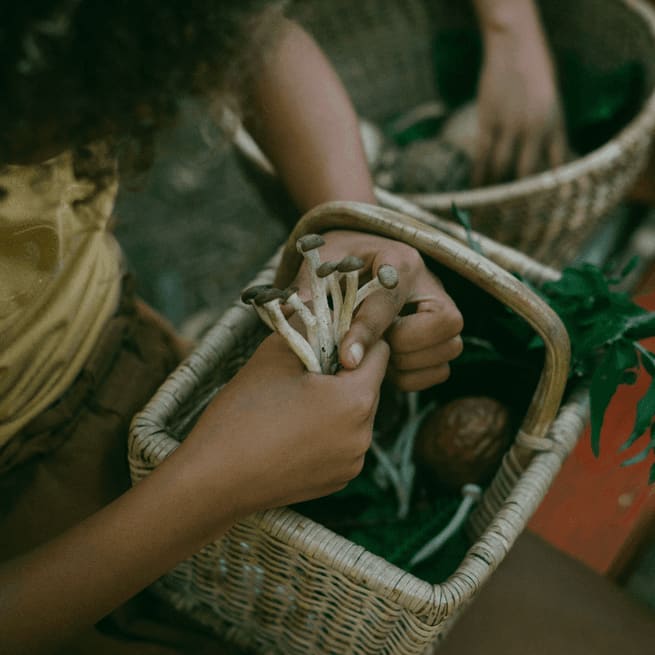

With the shift to the convenience of a pharmaceutical standard, many overlook the natural remedies in our own backyards. Wildcrafting is not a new practice; humans have always utilized their local wild plants and fungi medicine.
Herbal remedies can be just as effective as many over-the-counter medications and supplements. Today, many cultures continue to practice herbal medicine and use their knowledge of native plants to heal their bodies naturally.
The differences between wildcrafting and foraging

Foraging is a more popularized term used to describe the collection of wild food resources found in nature. Similar to foraging, wildcrafting is the practice of harvesting local resources for medicinal needs.
Many edible plants and fungi double in medicinal and culinary purposes, but you should be sure about what you pick before harvesting. Proper identification is vital to ensure the safety of both yourself and the natural environment around you. An updated field guide of the native species in your area is necessary to ensure you don’t collect any similar-looking poisonous plants or mushrooms. We want to ensure that what we gather is healing, not harmful or deadly to our health. When in doubt, it’s best not to take any risks.
Ethical wildcrafting

As tempting as it may be to dive headfirst into the possibilities of natural medicines, wildcrafting requires careful consideration of the local environment. The commodification of medicinal plants and fungi has left many species and their fragile ecosystems at risk. While harvesting, it is tremendously important to maintain a sense of gratitude for the land. Nature provides many resources for healing purposes, but these medicines are finite and can quickly deplete when overharvested.
With this, we must consider the local significance of the natural resources in our area, recognizing their environmental and cultural value. Ethical wildcrafting respects the natural habitat of these medicinal herbs. Our stewardship of the land plays an essential role in protecting plant populations and maintaining balance in our local ecosystems.
Remember to note any endangered plants or at-risk species, especially in your local area. United Plant Savers lists threatened, endangered, and rare wild medicinals in North America. Before setting out on your wildcrafting journey, look through the list to familiarize yourself with the species you should avoid harvesting. Remember that not all land is legal to forage or wildcraft in. You must always get permission from the landowner before harvesting on private property. Additionally, harvesting in some public spaces is illegal, so double-check which areas are authorized.
Mushroom wildcrafting

Many different kinds of wild mushrooms produce medicinal benefits. Some can be cooked into tasty meals, while others work best in tincture or powdered form. Harvesting mushrooms won’t damage the mycelial network that makes up the fungus. However, many animals and insects rely on mushrooms for their diet. When wildcrafting mushrooms, be mindful of the environment and only take what you will realistically need. Carrying your mushrooms in a basket or mesh bag will help spread the spores during your wildcrafting hunt so that you can contribute back to the ecosystem.
A few common medicinal mushrooms you may come across while wildcrafting are:
Chaga
Commonly found on birch trees, Chaga is a parasitic fungus high in antioxidants widely used to support immune health.
Lion’s Mane
According to research, Lion’s Mane is an effective supplement for various neurological treatments to improve brain health. Studies have shown that this mushroom has promising effects on Alzheimer’s prevention and anxiety relief (1).
Turkey Tail
Turkey Tail contains polysaccharides shown in studies to boost immune health and combat cancer by stimulating or suppressing certain immune functions (2).
Cordyceps
These funky-looking parasitic fungi have shown benefits in improving energy and respiratory health due to their compounds that fight inflammation and stimulate cells (3). Cordyceps have properties that demonstrate resistance to cancer cells and tuberculosis.
Reishi
The adaptogenic compounds in Reishi mushrooms help reduce symptoms of stress, depression, and anxiety (4). In addition, studies show that it can fight infection, cancer, and illnesses due to its antioxidant potential.
Wildcrafting herbs

Like mushrooms, plants require a mindful approach when harvesting. In addition to familiarizing yourself with local endangered plant species, remember only to take what’s necessary. As ethical wildcrafters, we must practice sustainability and leave the land better than how we found it.
When wildcrafting, avoid harvesting the entire plant. Although the roots of many plants have medicinal value, it is best to limit the destruction of the plant. Consider gathering another valuable part of the plant that will grow back, such as leaves and fruits. While taking from nature, try to give back to the land by practicing mutually beneficial wildcrafting, which benefits the growth of plants, or try scattering seeds of harvested plants to assist in their continuous development in their ecosystem.
Some commonly wildcrafted plants include:
Dandelion
Yes, those dandelions in your yard are entirely edible and full of antioxidants! Dandelion tea is a great way to improve digestion or ease an upset stomach.
Broadleaf Plantain
Many view the broadleaf plantain as another backyard weed; however, this plant has antihistamine and immune-boosting properties (5). It can be crushed and rubbed on wounds and insect bites or made into tea.
Blackberries
Blackberries’ leaves heal various ailments such as sore throats, diarrhea, and mouth ulcers (5). They can be chewed on for oral health, used externally for wounds, and boiled into tea for internal uses.
Nettle
Although nettle can leave you with a nasty sting, the histamines in the plant work as an antihistamine once ingested. They can relieve allergy symptoms and produce anti-inflammatory effects used in the treatment of arthritis (6).
Local wildcrafting

Tips for finding community resources
If you’re interested in wildcrafting, but don’t know where to start, try using community resources in your area, such as foraging groups and classes. Eat the Planet and Find a Forager provides lists of local foraging and wildcrafting groups and events that can assist you in further identification of the plants and fungi you may come across. If you are unsure which remedies you may require for your ailments, you can consult a herbalist to point you in the right direction on what to seek.
Wildcrafting toolkit
- A mesh bag or basket
- Scissors
- Pocket knife
- Weeding knife
- Gloves
- Field guides
- Proper clothing
When performed ethically, wildcrafting is a great way to connect deeply with the land while acquiring natural remedies. Be mindful of what you take from the environment. Research your local area to determine which plants and fungi are appropriate for wildcrafting. Always carry a locally relevant field guide and educate yourself on any poisonous look-alikes before harvesting to ensure safe consumption.
References
- Bing-Ji Ma, et al. “Hericenones and Erinacines: Stimulators of Nerve Growth Factor (NGF) Biosynthesis in Hericium Erinaceus.” Taylor & Francis, https://www.tandfonline.com/doi/full/10.1080/21501201003735556.
- Bhusal, Khuma Kumari, et al. “Nutritional and Pharmacological Importance of Stinging Nettle (Urtica Dioica L.): A Review.” Heliyon, U.S. National Library of Medicine, 22 June 2022, https://www.ncbi.nlm.nih.gov/pmc/articles/PMC9253158/.
- “Ganoderma Lucidum.” Ganoderma Lucidum - an Overview | ScienceDirect Topics, https://www.sciencedirect.com/topics/biochemistry-genetics-and-molecular-biology/ganoderma-lucidum.
- Hussan, Farida, et al. “Anti-Inflammatory Property of Plantago Major Leaf Extract Reduces the Inflammatory Reaction in Experimental Acetaminophen-Induced Liver Injury.” Evidence-Based Complementary and Alternative Medicine : ECAM, U.S. National Library of Medicine, 2015, https://www.ncbi.nlm.nih.gov/pmc/articles/PMC4537734/.
- Smiderle, Fhernanda R, et al. “Anti-Inflammatory Properties of the Medicinal Mushroom Cordyceps Militaris Might Be Related to Its Linear (1→3)-β-D-Glucan.” PloS One, U.S. National Library of Medicine, 17 Oct. 2014, https://www.ncbi.nlm.nih.gov/pmc/articles/PMC4201515/.
- “Turkey Tail Mushrooms Act as Nonspecific Immune Modulators.” Https://Connect.uclahealth.org/, https://connect.uclahealth.org/2022/08/29/turkey-tail-mushrooms-act-as-nonspecific-immune-modulators/.


